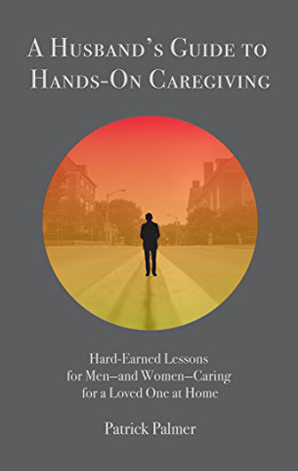Caregivers play a vital role in ensuring the well-being and quality of life of persons who require care. They take on a wide range of responsibilities and chores to assist those in need. In this blog, we’ll go over everything there is to know about primary caregivers so that we may properly recognize their distinct contributions.

What is a primary caregiver?
A primary caregiver is someone who takes on the primary task of caring for a loved one who is no longer capable of taking proper care of themselves. This could be a family member or close friend assisting with everyday tasks, medical needs, and emotional support. Primary caregivers are the foundation of home care, offering energy, affection, and dedication to their loved one’s well-being. They are responsible for ensuring that the person in their care is protected, supported, and cared for every day. Whether it’s helping with meals, checking prescriptions, or simply listening.
Responsibilities of a Primary Caregiver
Primary caregivers have a wide range of responsibilities that can vary depending on the specific needs of the patient. However, some common tasks include:
- Personal care: A primary caregiver’s tasks include providing physical care to the client. This includes support with basic personal care activities like washing, clothing, grooming, and toileting.
- Daily activities: These involveance with meals, services, and transportation. It is critical to develop a routine and guarantee that the client’s physical demands are satisfied at all times. This can improve their general well-being and help them stay as independent as possible.

- Medical care: Ensure that the patient receives the best possible medical care by managing medications, appointments, and communication with health care specialists.
- Emotional Support and Nurturing: This includes creating a secure and comfortable workplace, carefully listening to their concerns, providing reassurance, and promoting inclusiveness. You can encourage social connection by including them in activities that provide mental stimulation and emotional well-being. Your presence and support can have a significant impact on their mental condition and help them deal with the difficulties they experience.
- Advocacy: As the primary caregiver, you act as the caregiver’s advocate, conveying their needs and preferences to physicians, ensuring their rights are safeguarded, and making appropriate decisions on their behalf as needed. This may entail dealing with legal concerns, gaining access to community resources, and providing services to patients that improve their overall health.

The Benefits of a Primary Caregiver
A primary caregiverumerous benefits for patients, including:
- Consistent Care: The primary caregiver maintains consistent and uninterrupted care by fulfilling patients’ requirements daily.
- Personalized Attention: The intimate interaction between patient and caregiver provides for more tailored attention to the patient’s requirements and preferences.
- Improved Communication: With primary care physicians’ assistance, healthcare specialists can make better treatment decisions since they have more precise information about the patient’s condition.
- Longer Independence: By assisting with daily living activities and ensuring that they can remain in their home rather than going into assisted living facilities or nursing homes for the elderly, primary caregiver helps them preserve their independence for longer.
- Better Protection from Oversights and Errors: As they get more active in everyday patient care, primary caregivers can recognize possible problems, and medication errors, and minimize errors in daily tasks, ensuring a safe environment and effective care.
Self-Care Strategies for Primary Caregivers
Since primary caregivers endure many difficulties, there are a number of tools and support systems available to help. These materials are meant to lighten the load and offer much-needed assistance. Among the resources following are the most easily accessible for assistance:
- Support Groups: Caregiver support groups foster community and understanding by bringing together caregivers facing similar circumstances. These groups offer emotional support, guidance, and forums for sharing experiences.
- Respite Care: By providing the care recipient with expert care services, respite care enables pauses and time for relaxation to primary caregivers.
- Educational Resources: Workshops, online classes, and books for caregivers are examples of educational tools that provide caregivers with the information and skills they need to carry out their caregiving duties. These materials cover anything from professional care techniques to self-care.
- Professional Assistance: Seek expert help from home care organizations if you are experiencing anxiety, stress, or depression, or hire in-home caregivers to relieve some of your caring chores and allow you more time for yourself.
- Ask for Help: Assign work to others don’t take all the burden on your shoulders. Ask friends and family for help with chores, grocery shopping, or transportation.
Last Words
We hope this post was helpful to you. Caregiving can be stressful but remember, you’re not alone. We are all here cheering you on. If you’re looking for even more inspiration, check out Patrick Palmer’s books. He is an author, a cancer research advocate, and a caregiver to his late wife with tons of wisdom to share.



